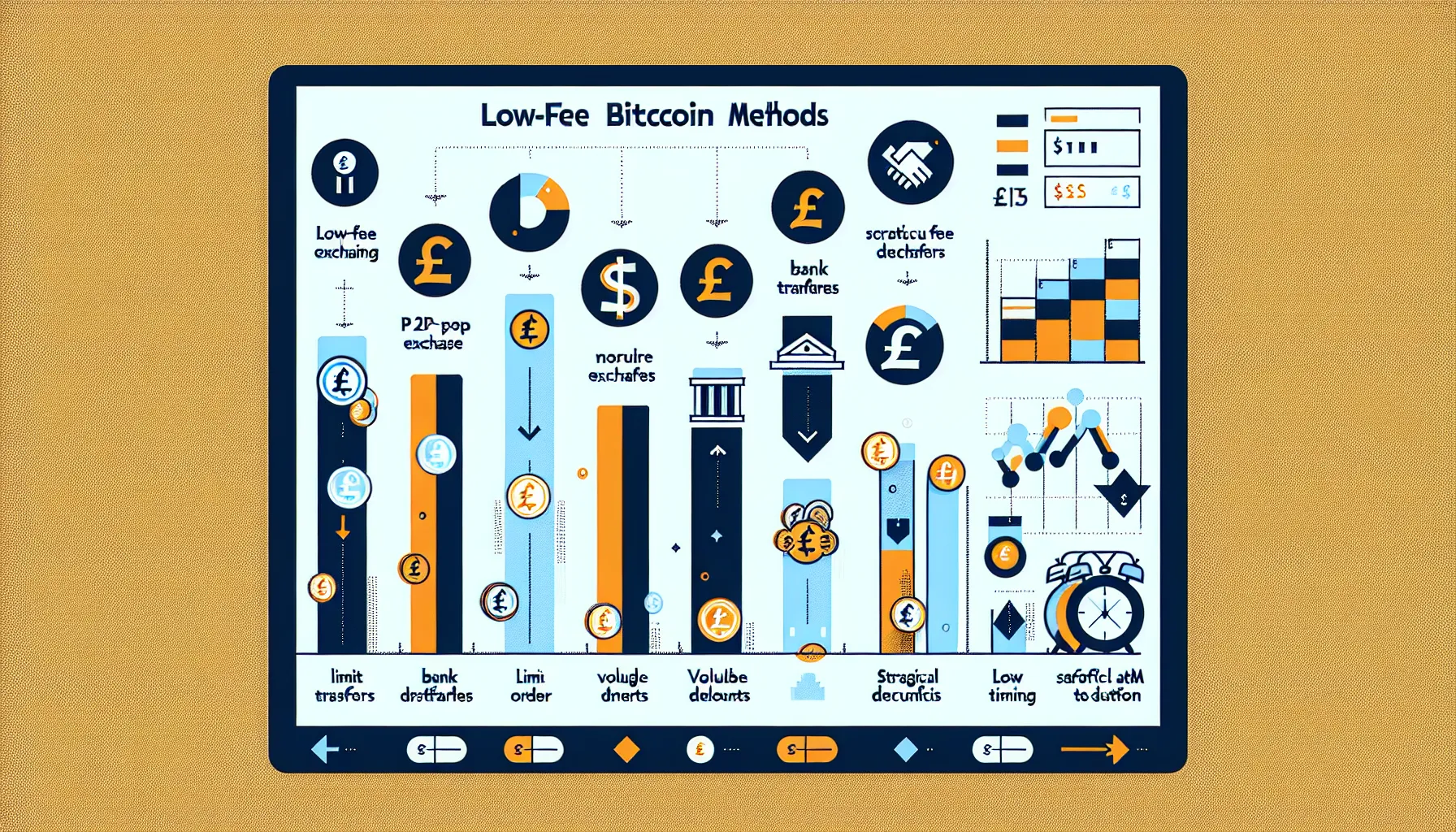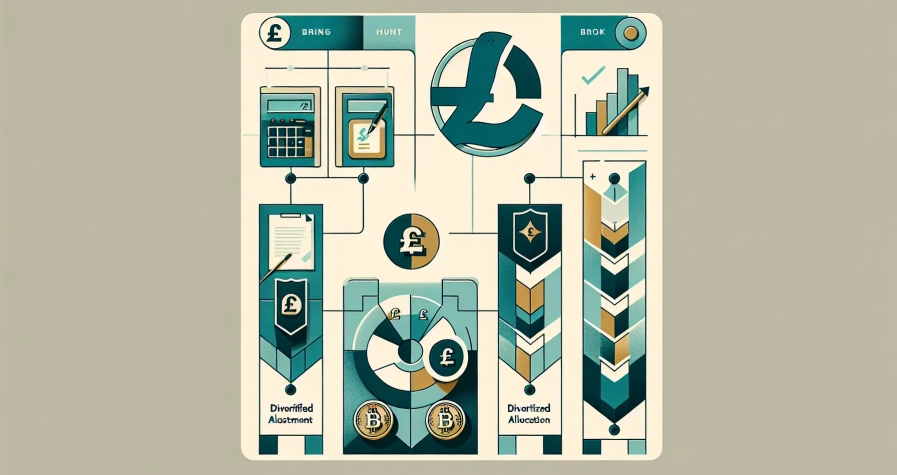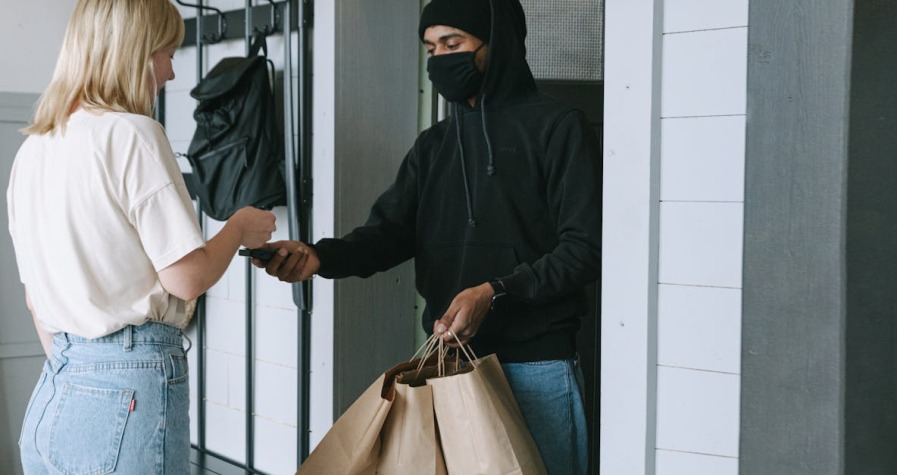Buying Bitcoin has never been more accessible, but high fees can quickly erode the value of any investment, especially for those just starting out or making smaller purchases. Whether it’s steep trading fees, card processing charges, or network transaction costs, these expenses add up fast and eat into potential profits.
The good news? There are several proven strategies to buy Bitcoin affordably without compromising on security or convenience. From leveraging peer-to-peer platforms to timing purchases strategically, savvy buyers can significantly reduce the costs associated with acquiring cryptocurrency.
This guide explores seven of the cheapest ways to buy Bitcoin in 2025, offering practical tips to help UK users and international buyers alike minimise fees and maximise value. Whether one is a first-time buyer or a seasoned investor, these methods can make a real difference to the bottom line.
Key Takeaways
- Peer-to-peer platforms like Binance P2P and LocalBitcoins allow buyers to purchase Bitcoin with minimal or zero fees by connecting directly with sellers.
- Choosing exchanges with low trading fees, such as Kraken (0.16% maker fee) or Binance (0.10%), and using limit orders instead of market orders can reduce costs by 30–50%.
- Bank transfers avoid the 2–4% card processing fees that credit and debit card purchases typically incur when buying Bitcoin.
- Bitcoin transaction fees fluctuate with network demand, so purchasing during low-traffic periods like weekends can significantly reduce blockchain costs.
- Strategic use of volume discounts, fee tiers, and native token discounts on major exchanges can unlock substantial savings for regular Bitcoin buyers.
- Understanding the difference between maker and taker fees, and timing withdrawals to avoid network congestion, helps minimise the overall cost of acquiring Bitcoin.
1. Use Peer-to-Peer (P2P) Platforms

Peer-to-peer platforms connect buyers and sellers directly, cutting out the middleman and the associated costs. Instead of paying a centralised exchange to help the trade, users negotiate and transact with one another, often resulting in lower fees and more flexible payment options.
How P2P Trading Minimises Costs
P2P platforms operate on a different model than traditional exchanges. Rather than charging a percentage-based trading fee on each transaction, many P2P services charge minimal or zero fees to buyers. Sellers typically pay a small commission to the platform for listing their Bitcoin, but buyers can often find offers with no added cost.
Because users set their own prices and payment terms, there’s room for negotiation. Buyers can shop around for the best rates, compare offers from multiple sellers, and choose payment methods that don’t incur extra charges, like direct bank transfers instead of credit or debit cards.
Another advantage is the absence of spread markups. Traditional exchanges often add a hidden spread between the buy and sell price, which can amount to 1–3% or more. On P2P platforms, the price is transparent and agreed upon upfront, giving buyers greater control over what they pay.
Best P2P Platforms for UK Users
Several reputable P2P platforms cater to UK buyers, each with its own strengths:
- LocalBitcoins: One of the oldest and most established P2P platforms, offering a wide range of payment methods and a strong reputation system to vet sellers.
- Paxful: Known for its extensive payment options, over 300 in total, including PayPal, gift cards, and bank transfers. Ideal for those seeking flexibility.
- Binance P2P: Part of the Binance ecosystem, this platform offers zero fees for buyers and a large pool of sellers, making it easy to find competitive prices.
- Bisq: A decentralised, open-source option for privacy-focused users. Trades are conducted without a central authority, though it requires a bit more technical know-how.
When using P2P platforms, it’s crucial to check seller ratings, complete identity verification where required, and use the platform’s escrow service to protect against fraud.
2. Choose Exchanges With Low Trading Fees
Not all cryptocurrency exchanges are created equal, especially when it comes to fees. Some platforms charge as much as 4–5% per transaction, whilst others keep costs well below 1%. Selecting an exchange with competitive fee structures is one of the simplest ways to save money when buying Bitcoin.
Comparing Fee Structures: Maker vs Taker
Understanding the difference between maker and taker fees is essential for minimising costs.
- Maker fees apply when a user places an order that adds liquidity to the exchange’s order book. This typically happens when setting a limit order that isn’t immediately matched.
- Taker fees are charged when a user’s order is filled immediately by matching an existing order on the book, effectively removing liquidity.
Maker fees are almost always lower than taker fees, sometimes by as much as 50%. For cost-conscious buyers, placing limit orders (discussed further in the next section) is a straightforward way to pay maker fees instead of taker fees.
Some exchanges also offer tiered fee structures, where costs decrease as trading volume increases. Others provide discounts for holding their native tokens or paying fees in cryptocurrency rather than fiat.
Top Low-Fee Exchanges in 2025
Here are some of the most cost-effective exchanges for buying Bitcoin in 2025:
| Exchange | Maker Fee | Taker Fee | Notable Features |
|---|---|---|---|
| Kraken | 0.16% | 0.26% | Strong reputation, high security, GBP support |
| Binance | 0.10% | 0.10% | Huge liquidity, fee discounts with BNB |
| Gemini | 0.00%–0.20% | 0.00%–0.40% | User-friendly, regulated in UK, ActiveTrader platform |
| Coinbase Pro | 0.00%–0.40% | 0.05%–0.60% | Lower fees than Coinbase standard, advanced tools |
| Bitstamp | 0.00%–0.40% | 0.05%–0.50% | Long-standing exchange, reliable for UK users |
For UK-based buyers, it’s also worth checking whether an exchange supports GBP deposits, as converting from other currencies can introduce hidden costs.
3. Set Limit Orders Instead of Market Orders
Choosing the right order type can have a tangible impact on transaction costs. Whilst market orders offer speed and convenience, limit orders are almost always the cheaper option, and they’re surprisingly easy to use once the basics are understood.
Why Limit Orders Save Money
A market order executes immediately at the best available price. It’s fast, but it comes at a cost: users pay taker fees, which are higher than maker fees. Also, during periods of high volatility or low liquidity, market orders can result in slippage, where the actual purchase price ends up being worse than expected.
A limit order, on the other hand, allows the buyer to set a specific price at which they’re willing to purchase Bitcoin. The order sits on the exchange’s order book until a seller agrees to that price. Because limit orders add liquidity to the market, they attract maker fees, which are typically 30–50% lower than taker fees.
For example, if an exchange charges a 0.10% maker fee and a 0.26% taker fee, choosing a limit order instead of a market order on a £1,000 Bitcoin purchase saves £1.60, a modest saving on a single trade, but meaningful over time, especially for active traders.
Another benefit: limit orders give buyers more control. Instead of accepting whatever price the market offers, they can set a target price and wait. If the market dips to that level, the order executes automatically. If not, no trade occurs, and no fees are paid.
Of course, the trade-off is time. Limit orders aren’t guaranteed to fill, particularly if the target price is far from the current market rate. But for those willing to be patient, the cost savings can be well worth the wait.
4. Buy Bitcoin With Bank Transfers
Payment method matters, a lot. Credit and debit card purchases are convenient, but they often come with processing fees that can add 2–4% to the cost of buying Bitcoin. Bank transfers, by contrast, are one of the most cost-effective ways to fund a cryptocurrency purchase.
Avoiding Card Processing Fees
When a buyer uses a credit or debit card to purchase Bitcoin, the exchange typically passes along the card processing fees charged by payment networks like Visa or Mastercard. These fees can range from 1.5% to as high as 5%, depending on the platform and the buyer’s location.
Some exchanges also treat cryptocurrency purchases as cash advances, which can trigger additional fees from the card issuer, plus interest charges that begin accruing immediately. In the UK, some banks have even blocked crypto-related card transactions altogether, adding another layer of inconvenience.
Bank transfers, whether via Faster Payments, SEPA (for EU transactions), or BACS, sidestep these fees entirely. Most reputable exchanges support bank deposits at little to no cost, making them the preferred funding method for cost-conscious buyers.
Setting Up Direct Bank Deposits
Setting up a bank transfer is straightforward on most platforms:
- Verify identity: Complete the exchange’s KYC (Know Your Customer) process, which typically requires a photo ID and proof of address.
- Link bank account: Add bank details to the exchange account. Some platforms verify this instantly: others may take 1–2 business days.
- Initiate deposit: Transfer funds from the bank to the exchange. In the UK, Faster Payments usually arrive within minutes.
- Buy Bitcoin: Once the funds are credited, purchase Bitcoin using a limit or market order.
For regular buyers, setting up a standing order or recurring deposit can streamline the process even further, ensuring funds are always available without the hassle of manual transfers each time.
Whilst bank transfers may take slightly longer than card payments, the savings are substantial, and for most users, the wait is minimal.
5. Take Advantage of Volume Discounts and Fee Tiers
Many exchanges reward high-volume traders with lower fees. Even if one isn’t planning to trade large amounts immediately, understanding how fee tiers work, and strategically timing purchases, can lead to meaningful savings over time.
How Trading Volume Affects Your Fees
Most major exchanges use a tiered fee structure based on 30-day trading volume. The more a user buys and sells, the lower their fees become. For example:
- Tier 1 (0–£10,000 volume): 0.26% taker fee, 0.16% maker fee
- Tier 2 (£10,000–£50,000 volume): 0.24% taker fee, 0.14% maker fee
- Tier 3 (£50,000+ volume): 0.22% taker fee, 0.12% maker fee
These tiers reset monthly, so consistent activity is key to maintaining lower fees. For individuals who plan to buy Bitcoin regularly, say, through a pound-cost averaging strategy, accumulating volume over the course of a month can unlock better rates.
Some exchanges also offer additional discounts for holding or using their native cryptocurrency. Binance, for instance, reduces fees by 25% when users pay with BNB (Binance Coin). Similarly, FTX (now operating under new management) has historically offered tiered discounts for holding FTT tokens.
Another tactic: consolidate trades. Rather than making several small purchases throughout the month, buyers can batch their orders to take advantage of volume thresholds more quickly. Of course, this approach requires careful planning and isn’t suitable for everyone, particularly those who prefer to spread risk through regular, smaller purchases.
For larger investors or those building a long-term position, reaching higher fee tiers can result in hundreds or even thousands of pounds in savings annually. It’s worth checking an exchange’s fee schedule and doing the maths before committing to a platform.
6. Use Bitcoin ATMs Strategically
Bitcoin ATMs offer instant, cash-based access to cryptocurrency, but they’re notorious for high fees, often ranging from 7% to 15% or more. That said, with a bit of research and strategic use, buyers can find lower-fee machines and situations where ATMs make sense.
Finding Low-Fee Bitcoin ATMs Near You
Not all Bitcoin ATMs are created equal. Fee structures vary widely depending on the operator, location, and machine type. Some ATMs charge as little as 4–6%, whilst others exceed 20%. The key is knowing where to look.
Several websites and apps track Bitcoin ATM locations and fees:
- CoinATMRadar: A comprehensive directory listing thousands of machines worldwide, including user-reported fee information and supported cryptocurrencies.
- Bitcoin ATM Map: Another popular resource with filtering options for fee ranges, buy/sell capabilities, and operator.
When evaluating an ATM, check for:
- Fee transparency: Reputable operators clearly display fees on-screen before the transaction is completed.
- Buy vs sell rates: Some machines offer better rates for buying Bitcoin than selling (or vice versa).
- Location: ATMs in high-traffic tourist areas or convenience stores often charge more than those in dedicated cryptocurrency shops or tech hubs.
Bitcoin ATMs can be a smart choice in specific scenarios:
- Privacy: ATMs typically require less personal information than exchanges, appealing to privacy-conscious buyers (though UK regulations require some level of identity verification).
- Immediacy: When speed is essential and other methods aren’t available, paying a premium for instant access may be justified.
- Cash transactions: For those without bank accounts or who prefer not to link financial accounts to exchanges, ATMs provide a viable alternative.
But, for most buyers, ATMs should be a last resort or occasional convenience rather than a primary purchasing method. The fees, whilst variable, are almost always higher than online exchanges or P2P platforms.
7. Buy During Low-Traffic Periods to Reduce Network Fees
Bitcoin transaction fees aren’t static, they fluctuate based on network demand. By timing purchases strategically, buyers can avoid peak congestion periods and save on blockchain fees, particularly when withdrawing Bitcoin to a personal wallet.
Understanding Blockchain Congestion and Timing
Every Bitcoin transaction must be verified and added to the blockchain by miners. When demand is high, such as during market rallies, major news events, or periods of increased trading activity, the network becomes congested, and fees spike.
Bitcoin uses a fee market system: users who pay higher fees get their transactions confirmed faster, whilst those who pay lower fees may wait hours or even days. During peak times, average transaction fees can exceed £5–£10 or more. During quieter periods, fees may drop below £1.
Several factors influence network congestion:
- Day of the week: Weekends and late evenings (UK time) tend to see lower activity, as institutional traders and businesses are less active.
- Market volatility: Sudden price swings drive increased trading and withdrawal activity, pushing up fees.
- Global time zones: Bitcoin is a global network, so activity peaks during overlapping business hours in major markets (US, Europe, Asia).
To time purchases effectively:
- Monitor fee trends: Websites like Mempool.space and BitInfoCharts provide real-time data on current network fees and congestion levels.
- Buy on exchanges, withdraw later: If possible, purchase Bitcoin during high-traffic periods but delay withdrawing to a personal wallet until fees drop.
- Use SegWit addresses: Segregated Witness (SegWit) addresses reduce transaction size, resulting in lower fees. Most modern wallets and exchanges support SegWit by default.
- Batch withdrawals: Instead of making frequent small withdrawals, consolidate them into a single transaction to spread the fee cost across a larger amount.
Whilst this strategy requires a bit more planning, the savings can be significant, especially for users who frequently move Bitcoin between wallets or make regular purchases.
Conclusion
Buying Bitcoin doesn’t have to mean paying exorbitant fees. By understanding how fees work and applying the strategies outlined in this guide, buyers can significantly reduce costs and keep more of their investment working for them.
Whether it’s leveraging peer-to-peer platforms, choosing exchanges with competitive fee structures, using bank transfers instead of cards, or timing purchases to avoid network congestion, each method offers tangible savings. And when combined, these tactics can make a substantial difference, particularly for those buying Bitcoin regularly or in larger amounts.
The key is to stay informed, compare options, and be willing to invest a little extra time upfront. The cheapest way to buy Bitcoin will vary depending on individual circumstances, but with the right approach, anyone can minimise fees and maximise value in 2025 and beyond.
Frequently Asked Questions
What is the cheapest way to buy Bitcoin without high fees?
Peer-to-peer platforms like Binance P2P and LocalBitcoins offer the cheapest way to buy Bitcoin, often charging zero fees for buyers. Combining low-fee exchanges with bank transfers and limit orders also significantly reduces costs.
How do limit orders help reduce Bitcoin trading fees?
Limit orders attract maker fees, which are typically 30–50% lower than taker fees charged on market orders. By setting a specific purchase price, buyers add liquidity to the exchange and pay less per transaction.
Are Bitcoin ATMs a cost-effective option for buying cryptocurrency?
Bitcoin ATMs typically charge between 7–15% in fees, making them one of the most expensive options. However, strategically using low-fee machines (4–6%) found via CoinATMRadar can reduce costs in urgent or cash-based situations.
Why do bank transfers cost less than debit cards when buying Bitcoin?
Bank transfers avoid card processing fees of 2–5% charged by payment networks. UK buyers using Faster Payments can deposit funds instantly at little to no cost, making bank transfers significantly cheaper than card purchases.
Can I avoid Bitcoin network fees by timing my purchases?
Yes. Bitcoin transaction fees fluctuate based on network congestion. Buying during low-traffic periods like weekends or late evenings, and monitoring tools like Mempool.space, helps reduce blockchain fees, especially when withdrawing to personal wallets.
Do cryptocurrency exchanges offer volume discounts on trading fees?
Most major exchanges use tiered fee structures that reward higher 30-day trading volumes with reduced fees. Platforms like Binance and Kraken lower maker and taker fees as monthly volume increases, benefiting regular and larger buyers.









